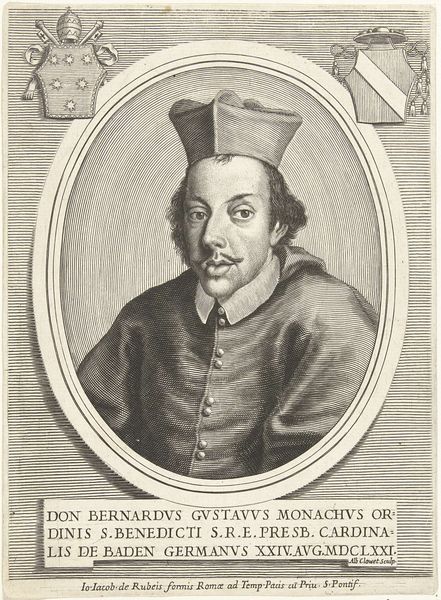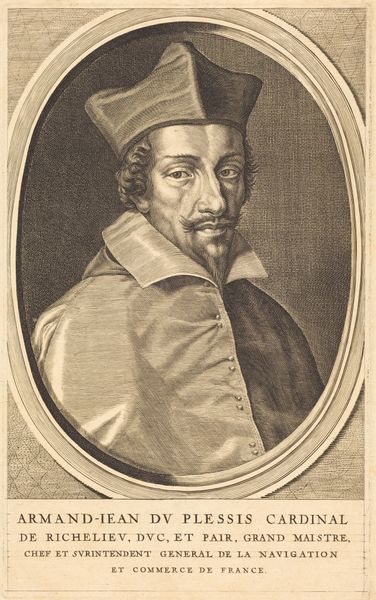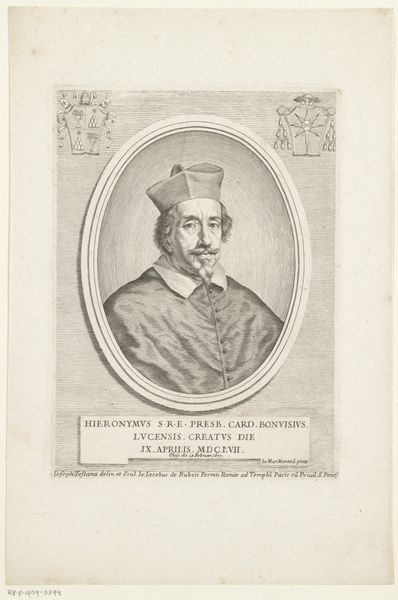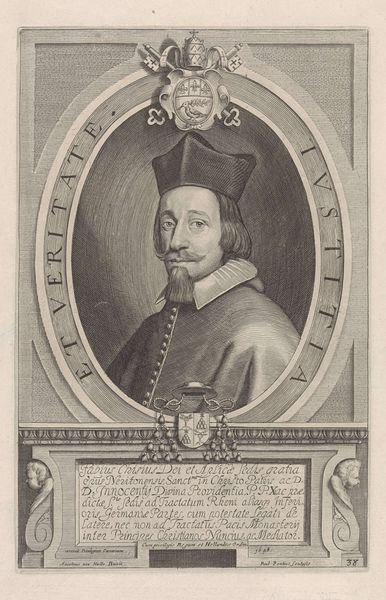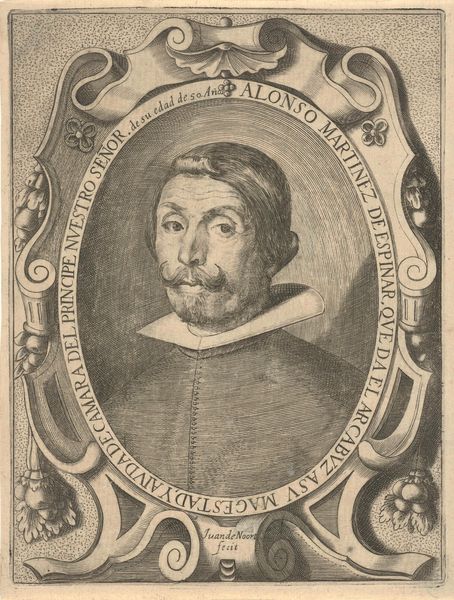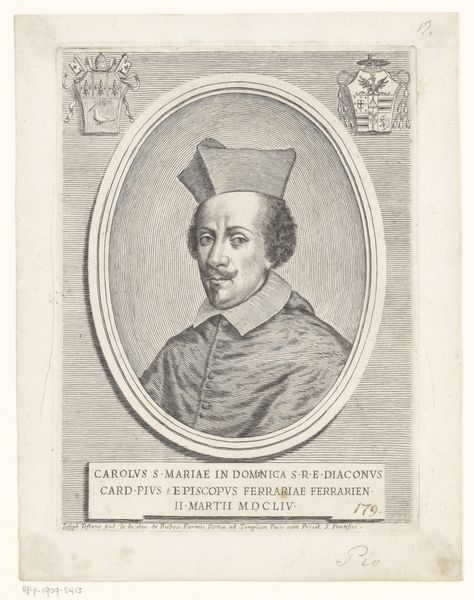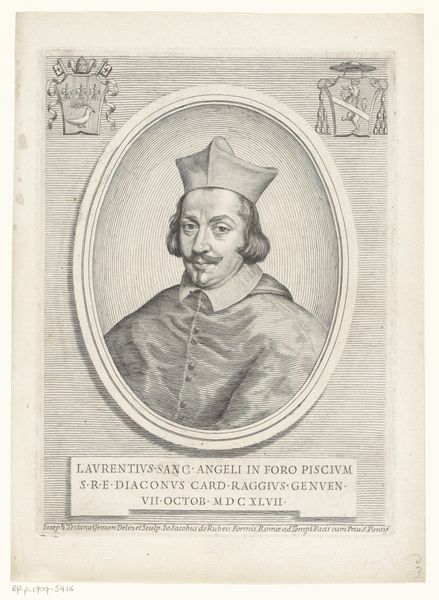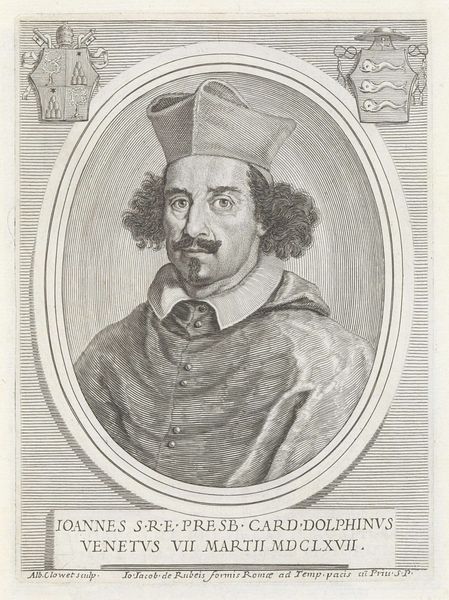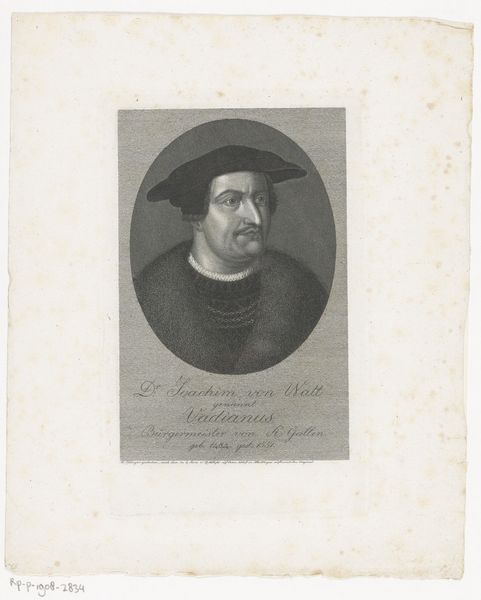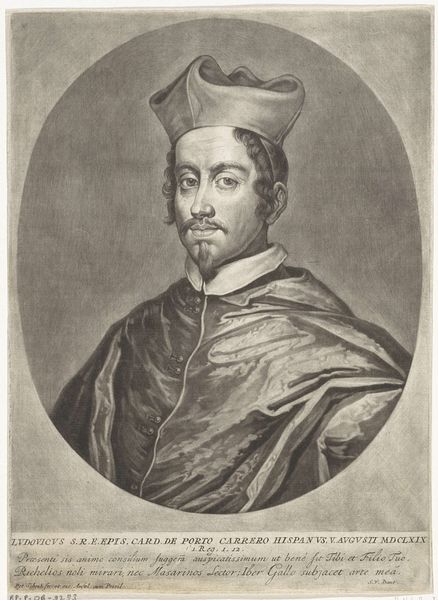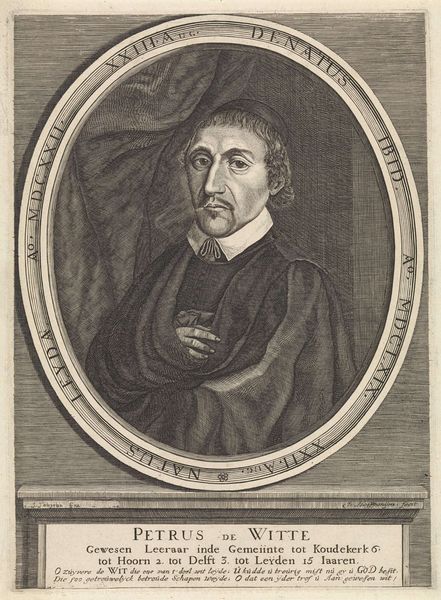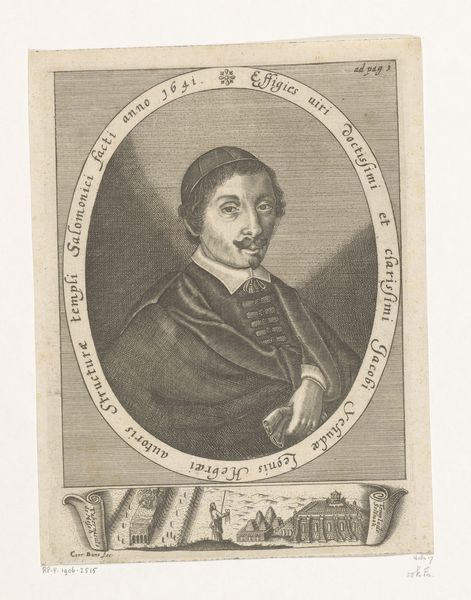
print, engraving
#
portrait
#
baroque
# print
#
old engraving style
#
figuration
#
line
#
engraving
Dimensions: height 189 mm, width 141 mm
Copyright: Rijks Museum: Open Domain
Curator: This is Giacomo Piccini’s "Portrait of Cardinal Luigi Omodei," created in 1659. Editor: The detail is incredible, almost photorealistic, for an engraving from that era. There’s a certain...severity, would you agree? An unyielding formality. Curator: The composition emphasizes the Cardinal's gaze and precise detailing, using linear precision to structure a classic Baroque portrait, don't you think? Notice how Piccini employed cross-hatching and fine lines to create tonal variations, achieving an illusion of volume and depth despite the work's flatness. Editor: While the technical skill is clear, one has to consider who Omodei was, and what role these lavish portraits played in reinforcing power structures. This image solidifies his presence in the Catholic hierarchy. He embodies power and influence here through meticulously etched lines that mimic status, not necessarily character. The tiny dogs adorning each corner of the lower portion act almost as heralds or mascots. They feel quite subversive...almost mocking. Curator: That might be projecting too much current sentiment on a bygone era, don't you think? The dogs could simply serve as attributes, symbols of loyalty or fidelity – conventional components of the broader Baroque symbolic system. Perhaps look more to the textural contrast achieved. The sleekness of his vestments set against the rougher treatment of his hair. The line emphasizes his sharp features within that oval frame. Editor: Still, placing that symbol in the context of wealth, class and rigid hierarchies reveals implicit social values. Also consider how access to art itself has historically been limited. Visual messaging became a weapon as well as adornment. It reflects much more than simple mastery. Curator: The way Piccini crafted the interplay of light and shadow elevates it beyond mere social documentation. See the lines on the Cardinal's face. We can talk about it formally and thematically forever. Each viewer can discern new details to be drawn by the careful, artistic skill presented. Editor: Precisely. Art history serves as an entry point. In this work, though, I can see how the tools can be utilized and reflect beyond a particular subject. These old artworks may still inform and perhaps help deconstruct present-day hegemonies as we observe it.
Comments
No comments
Be the first to comment and join the conversation on the ultimate creative platform.
